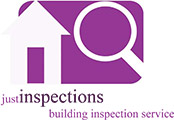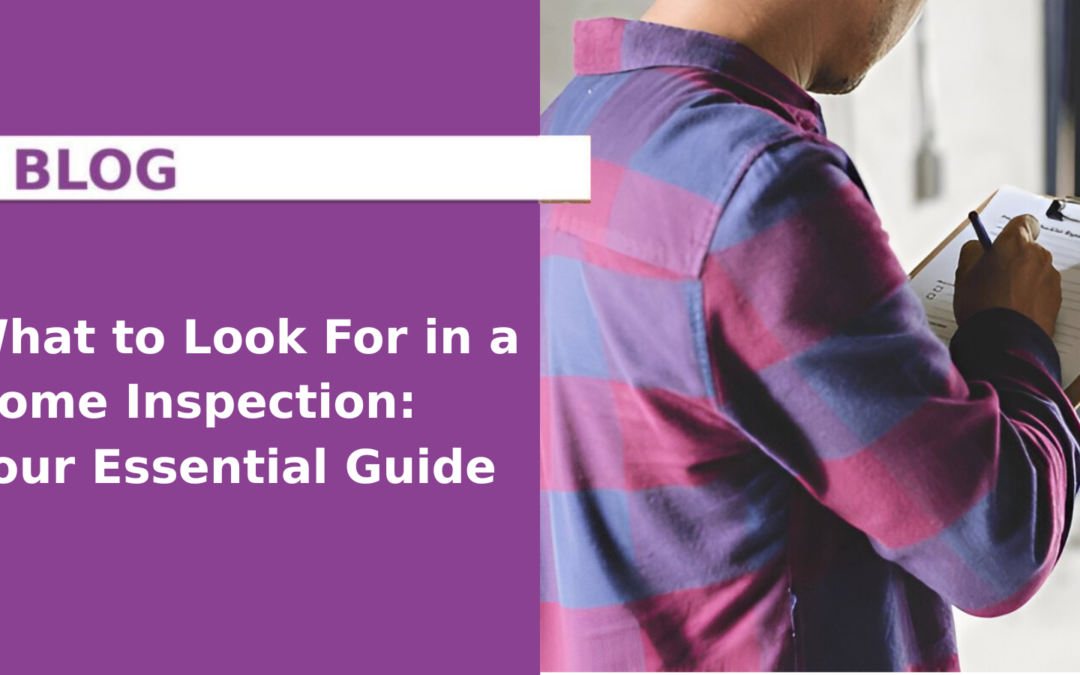Are you up for purchasing a property? Great, but before you sign those documents, what to look for in a home inspection? Photos and virtual tours can only show so much, and without physically entering, you may miss important aspects such as natural light, ventilation, and signs of potential property maintenance issues related to plumbing, street noise, or structural issues. Purchasers still tend to skip in-person inspections, frequently for their cost. What precisely should you check for, then, before you sign the papers? This detailed pre-purchase home inspection checklist will assist you in examining a home and preventing any troubling or expensive surprises later on.
What is a Home Inspection and Why is it Non-Negotiable?
Pre-purchase house inspections are your defence against purchasing a home that could have multiple flaws. In Australia, inspections should align with Australian standards like AS 4349-2007, which governs the assessment of structural soundness and safety. A property may have property maintenance issues like termite damage, cracked foundations, or poor wiring even if it looks to be in prime condition from the outside. You can negotiate repairs, learn about important safety risks or necessary maintenance, or change your offer if you hire a certified inspector to help you identify these issues.
Home Inspection Checklist
A home inspection checklist serves as a useful guide during walkthroughs or when reviewing the inspector’s report. It is a supplementary tool, not a substitute for a professional inspection, which addresses what to look for in a home inspection with expert eyes. Below is a breakdown of the critical areas and key things they (and you) should focus on:
-
A. Structural Components
-
Foundation and Ground
Look for structural issues in a home, like foundation cracks (horizontal, large vertical, or stair-step patterns) in concrete slabs, brickwork, or retaining walls due to settling, bowing, or shifting. Horizontal cracks or gaps larger than 3 mm indicate major structural problems, whereas hairline vertical cracks are frequently harmless (produced by natural settling). Gaps around window frames, uneven flooring, or stuck doors are other indicators of foundation movement, which can result in efflorescence, moisture, or water damage in crawl spaces or basements.
-
Load Bearing Walls
Load-bearing walls with large cracks compromise structural stability. Look for vertical cracks wider at the top-these may indicate uneven settling. A licenced building inspector can use laser levels to measure floor gradients and identify problematic areas.
-
Flooring
The cost of fixing foundation problems is high, and foul odours may indicate mildew or animal damage. Over time, floors in Adelaide and Melbourne may move or break due to the expanding clay soils.
Check that the carpet is not torn, frayed, or discoloured; make sure the wall and floor edges are flush. Look for uneven flooring or doors that don’t close all the way, and see if there are any chips, stains, or scratches on hardwood floors.
Pests: Termite and Pest Damage
Australia’s climate risks pests like termites. Termites cause over $1.5 billion in damage annually in Australia, often hidden within walls or under floors. Watch for key signs such as mud tubes on exterior walls, timber that sounds hollow when tapped, sawdust-like frass, and blistered paint or swollen skirting boards. A licenced pest inspector uses tools like moisture metres and thermal imaging to detect termite and pest damage invisible to the naked eye. Regular inspections, ideally every 6 to 12 months, should be conducted, especially for properties in high-risk areas.
-
B. Exterior Assessment
Check for rot, insect damage, or loose railings on patios, decks, and fences. Older homes should have their timber stumps inspected for degradation because rebuilding them is an expensive project. Make sure the fencing meets Australian Safety Standards (AS 1926.1-2012) if the property has a pool.
Roof
The roof in a house is a component that can cost tens of thousands to replace. Look for missing or cracked tiles or shingles, rusted metal sheets, or sagging rooflines, which may indicate structural weakness
Gutters & Drainage
Look for any indications of standing water close to the house, and make sure the surrounding ground diverts water away from the foundation (positive grading). You should also check if the gutters are clogged, damaged, or not sloped correctly.
Wall Covering (External Perimeter Walls)
Inspect exterior siding and walls for damage such as decay, cracks, or holes that could allow pests to enter; evaluate the condition of paint or stain. There should be sufficient clearance between the siding and the ground, and inspect trim and caulk. Weep holes, which are tiny holes that are usually placed 1200 mm apart above and below windows and doors as well as along suspended slab levels, are essential for cavity wall drainage, particularly in multi-story buildings. Their absence may result in expensive interior wall damage and water intrusion.
Windows & Doors
Check for rot on window and door frames, look for fogging on double-paned windows, which is a sign of broken seals, feel for drafts, test how easy it is to operate them, and make sure the locks are tight and working.
Decks, Patios, Driveways, Walkways
Evaluate the condition of decks, patios, driveways, and walkways for issues like rot, cracks, or uneven surfaces, and ensure railings on decks and stairs are secure.
-
C. Main Home Systems
-
Plumbing
Plumbing problems may be costly to repair, and low water pressure may indicate outdated pipes or faulty drainage.
- Test all the toilets to flush.
- Turn the taps on and off.
- Test the water pressure in the bathtubs and showers.
- Check for leaks and puddles around drainage.
- Inspect the hot water in bathrooms.
- Look for water spots under sinks, which could suggest slow leaks.
- Keep an eye on the hot water system’s age and condition; ageing systems may need to be replaced at a high cost.
- Run water through sinks and note how quickly the water drains to check the drainage.
-
Electrical System
-
Main Panel
-
Check the main electrical panel’s age, capacity, and state. Look for overheating indicators and right-sized fuses and breakers.
-
Wiring
-
Determine the type of wiring, with particular attention to outdated systems (such as aluminium or knob-and-tube), and examine it for damage or faulty connections.
-
Outlets/Switches
-
Verify that outlets and switches are operational, make sure they are grounded (3-prong), and make sure GFCI protection is installed close to water sources.
-
HVAC (Heating, Ventilation, Air Conditioning)
Assess the years of service and condition of the AC, boiler, and furnace. Check for noise and test the heating and cooling. Examine the filter and the ducts for leaks, damage, and insulation. Test the ventilation and thermostat.
-
D. Interior Spaces
-
Walls & Ceilings
-
- Fine cracks on the internal wall plastering are typical in older homes. Check for paint scratches, especially around windows and door frames. But major cracks in foundations, ceilings, or load-bearing walls could indicate serious structural problems. Water stains on ceilings or walls indicate past leaks, potentially from faulty roofing or plumbing.
-
Attic & Basement/Crawl Space
-
- Check the crawl space and attic for insulation type, pests, mould or dampness, exposed wiring, foundation cracks, and ventilation. Make sure you have adequate ventilation (gable, ridge, and soffit vents) to prevent mould and moisture.
-
E. Safety Features
-
Life Safety Systems
-
Verify the presence, placement, and functionality of smoke and carbon monoxide detectors.
-
Safe Egress and Fall Prevention
-
Check the condition and security of handrails/guardrails (stairs, decks).
-
Electrical and Ventilation Safety
-
Make sure the Ground Fault Circuit Interrupter (GFCI) outlets are functional in areas prone to moisture, and check proper venting of all fuel-burning appliances to avoid accumulation of toxic gases.
-
F. Location
Check if the area fits your lifestyle, including how accessible it is to stores, schools, and public transportation, as they will raise the property’s worth. Verify zoning laws to avoid unpleasant surprises when building in the future. Check local crime statistics, potential developments, and noise levels by driving by the property at different times.
Why Should I Find the Right Professional to Inspect My Home
Always work with a licenced, experienced, and reputable building inspector who is insured against public liability and professional indemnity. Ask for recommendations from real estate agents, but also ask close friends or relatives who have just bought. Check credentials (InterNACHI, ASHI certification), read reviews, and request a sample report to assess what kind of details they offer.
At Just Inspections, we are completely qualified and insured, and our staff aims to give our clients complete and accurate findings.
The Home Inspection Report: Findings and Your Options
Once you get the report, outlining the results, complete with images, severity ratings, and suggestions, go over the report. The report will list:
- A list of faults in the house, if any.
- Can these faults be repaired?
- How much are these repairs likely to cost?
Consider the following options on the basis of the findings:
- Proceed with the purchase just as it is.
- Talk to the seller about the terms of the contract, including the price.
- Obtain repair bids so that you may bargain and create a budget.
- Terminate the arrangement if the issues are too severe.
- If you choose to purchase the property, create a maintenance schedule.
Pre-Settlement Inspection
This is the last visit you will make before settling on your future home. This phase is important for the reasons listed below:
- You need to make sure the house is empty before moving in.
- The owners shouldn’t have left any rubbish or old belongings behind.
- Verify that all of the terms of the contract, including painting, cleaning, gardening, etc., have been fulfilled.
Just Inspections: Independent & Insured Home Inspections
The first step in purchasing a property is a home inspection. Any property inspection report that the seller or the agency offers should be avoided. The only way to know that it is accurate and independent is to obtain your report. Ready to get real insight into what to look for in a home? Get your pre-purchase building and pest inspection scheduled by giving Just Inspections a call right now. Count on us to help you make the right purchase.

